 username@email.com
username@email.com
In the coming lesson, we’ll explore geometric proofs related to triangles and parallel lines.
Parallel Axiom: If two lines, l and m, intersect a transversal so that the sum of the interior angles on the same side of the transversal is equal to 180°, then l and m are parallel.
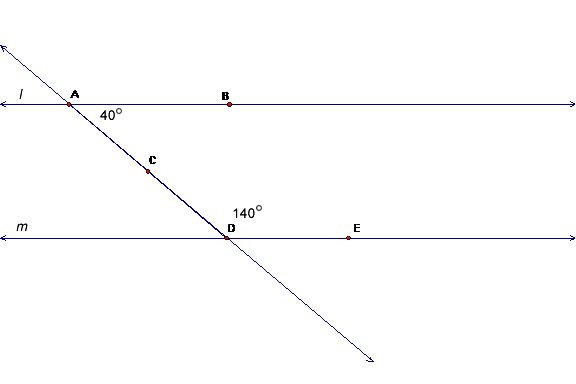

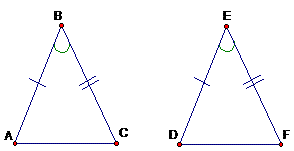

Angle-Side-Angle (ASA) Triangle Congruence Theorem: If two angles and the included side of one triangle are congruent to the corresponding angles and side of another triangle, then the triangles are congruent.
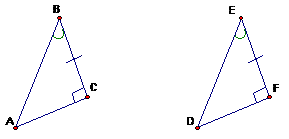

Angle-Angle (AA) Similarity Theorem: If two angles in one triangle are congruent to two angles in another triangle, then the triangles are similar. Two figures are similar if they have the same shape, but not necessarily the same size.
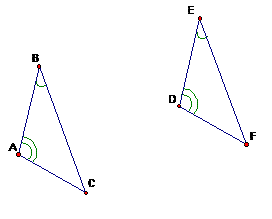

The AA theorem states that only two angles must be congruent for similarity. Do you see why this is true? Since the sums of the angles in each triangle are equal, if two angles are congruent, then the third angles must also be congruent.
Isosceles Triangle Theorem: If a triangle is isosceles, then the angles opposite the congruent sides are congruent.
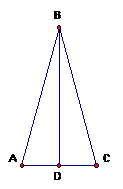
Isosceles Triangle Theorem
Let’s prove this one together. We’ll use the isosceles triangle above (△ABC) and start by bisecting ∠ABC with segment BD.
| Statement | Justification |
|---|---|
| △ABC is isosceles BD is an angle bisector |
Given |
| m∠ABD ≅ m∠CBD | Definition of Angle Bisector |
| AB ≅ BC | Definition of Isosceles |
| BD ≅ BD | Reflexive Property of Congruence |
| △ABC ≅ △CBD | SAS |
| ∠BAD ≅ ∠BCD | Corresponding Parts of Congruent Triangles are Congruent (CPCTC) |
Converse of the Isosceles Triangle Theorem: If two angles of a triangle are congruent, then the triangle is isosceles and the sides opposite those angles are congruent.

Converse of the Isosceles Triangle Theorem
We’ll prove this one together, as well. We’ll use △ABC above and assume that ∠BAC ≅ ∠BCA.
| Statement | Justification |
|---|---|
| ∠BAC ≅ ∠BCA | Given |
| AC ≅ AC | Reflexive Property of Congruence |
| ∠ACB ≅ ∠CAB | Given |
| △ABC ≅ △CBA | ASA |
| AB ≅ BC | Corresponding Parts of Congruent Triangles are Congruent (CPCTC) |
| △ABC is isosceles | Definition of Isosceles |
Basically, we proved that the triangle is congruent to itself. However, this example shows that the order that the vertices of the congruent triangles are named is important. That order tells us about the congruence of corresponding parts of the congruent triangles.
Which pair of statements can be used to prove that ΔBAC ~ ΔBDE?
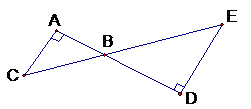
Choice B is correct. The two triangles can be shown to be similar by AA. This means that if two angles of one triangle are congruent to two angles of another triangle, then the triangles are similar. Each statement in choice B is true and shows that the pairs of angles are congruent. Choice A is incorrect, because ∠C and ∠E are not vertical angles. Choice C and Choice D contain incorrect statements.